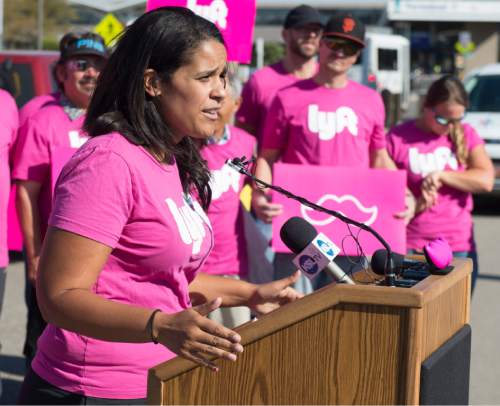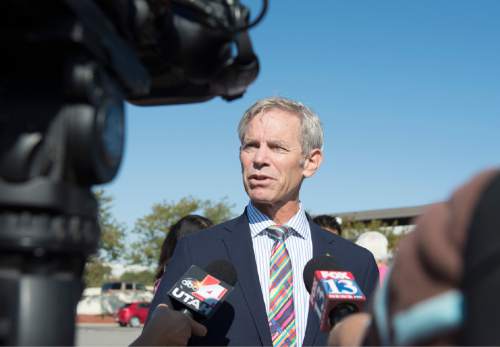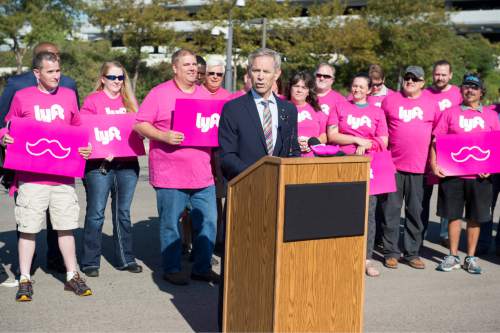This is an archived article that was published on sltrib.com in 2015, and information in the article may be outdated. It is provided only for personal research purposes and may not be reprinted.
Glowing pink mustache dashboard ornaments are now legitimate at Salt Lake City International Airport after sweeping changes in regulations for ride-hailing companies.
The bright banana-size logo is the identifier for Lyft, the first such new-age transportation network to agree to revamped regulations that require such companies to register with the Salt Lake City Department of Airports, Executive Director Maureen Riley said Thursday.
At a news conference, Riley and Mayor Ralph Becker hailed the breakthrough as making way for increased transportation options. The new rules are designed to reduce confusion and traffic backups.
The regulations require that freelance drivers learn airport transportation rules and carry $1 million in liability insurance. Drivers also are subject to background checks.
Traditional taxicabs pay to serve the airport by a method that electronically counts each cab trip to Salt Lake City International. It comes out to about $1 per trip.
Lyft will pay the user fee based on an "honor system," in which the company will notify the airport how many trips its drivers take to the passenger terminals.
"Salt Lake City has been a great market for ride share," said Lyft spokesman Bakari Brock. "We will try to address the regulatory process in each market. It's our expectation that we will be able to provide safe and affordable rides to our customers."
It's unclear whether Lyft's main competitor, Uber, will follow suit.
In May, Riley told the City Council that Lyft and Uber were operating outside of city laws at the airport. The lack of regulation was causing confusion and congestion, she said.
That has changed for Lyft drivers, who now can legally access customers from passenger-car curbs.
Cabs and limousines have separate entries to terminal curbs.
The City Council spent several months in 2014 crafting an ordinance that made way for the new-age transportation companies, doing away with 30-minute wait times for limousines and the $30 minimum that applied to them.
But the council determined drivers for those companies should submit to city background checks and city vehicle inspections. It also mandated a $1.5 million liability-insurance policy for each driver — as was the case for taxicabs.
Uber and Lyft refused to comply and sought redress from the state Legislature.
In response, the council late last year passed an ordinance that deregulated taxis to a great degree.
Less than two months later, the Legislature compounded the disruption by adding its own law — SB294 — to the mix.
The state law that took effect in May holds that all ground-transportation companies in Utah are responsible for their own vehicle inspections and background checks. It will be enforced by the state Division of Consumer Protection.
SB294, however, made an exception for the international airport and allowed Salt Lake City to regulate ground transportation there.
By that time, some traditional cabdrivers had chucked mileage rates agreed upon in a contract with Salt Lake City that is now moot. Visitors and residents alike complained of price gouging.
But Riley said Thursday that her department has put a ceiling on cab rates from the airport to Salt Lake City destinations. That rate is $25 for downtown and $30 for locations east of 500 East.











